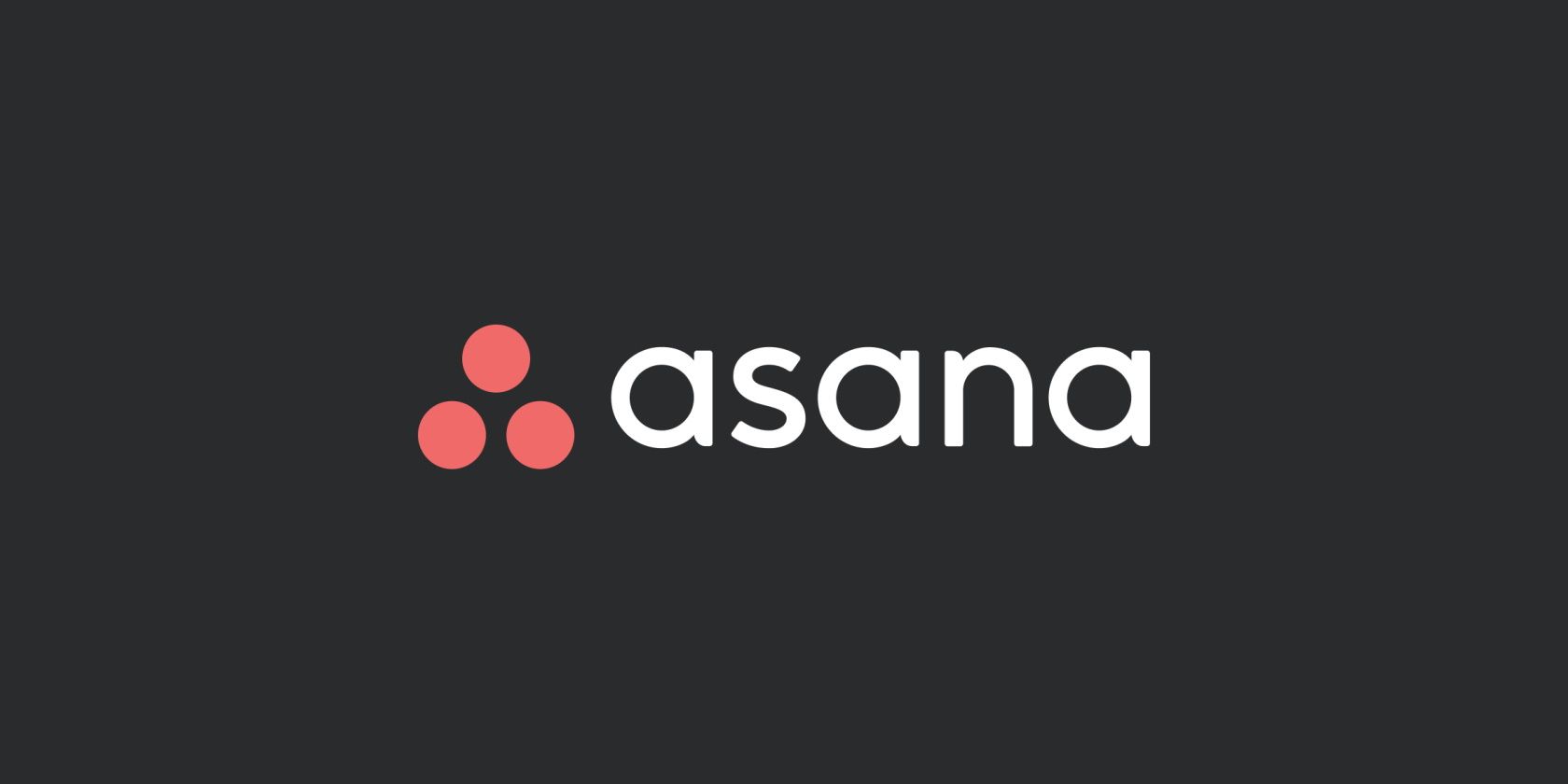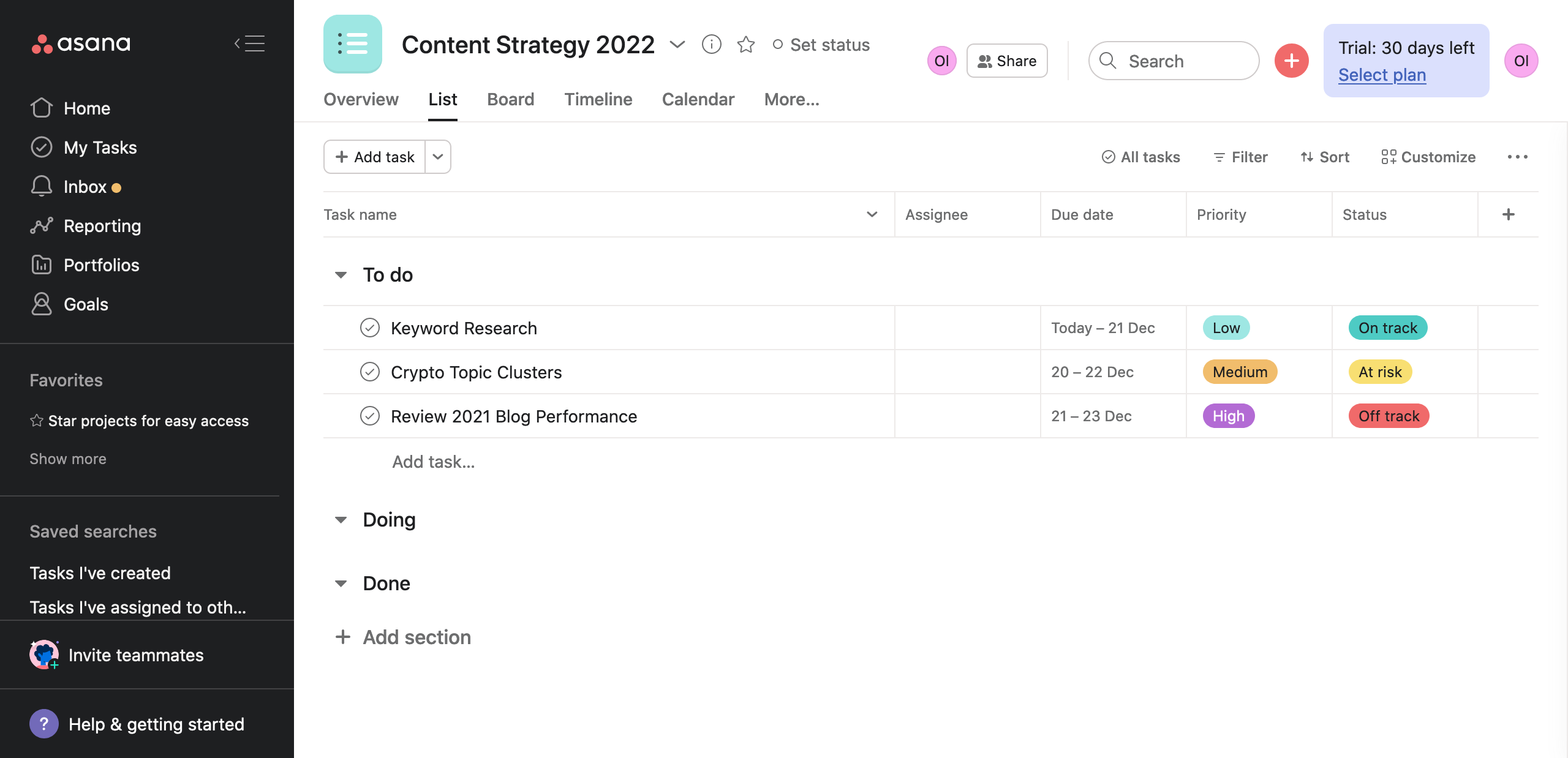Asana is a fantastic tool for managing your team and tasks, and you can use it for free or for a fee. Of course, the free version of Asana has fewer features than the paid version, but many small teams find it sufficient.
If you're unsure whether Asana Free or Premium will be suitable for your team, here's a comparison of the two. We've been using Asana for a long time, so we'll go over the features of both the free and paid versions, as well as the key differences to keep in mind.
What Does Asana Free Include?
Asana Free is a fantastic project management tool for individuals and small businesses. It may be sufficient if you only intend to use it to manage personal tasks or freelance projects.
When you create a free Asana account, you'll be able to:
- Create tasks and assign them to different team members.
- View your tasks in different layouts (list view, board view, and calendar view).
- Add and collaborate with up to 15 team members.
- Integrate with other apps, like Slack, Harvest, and Gmail.
- Create two different account types (an organization or a workspace).
- Access some free Asana project templates to outline tasks and projects faster.
- Set up your teams (e.g., Design, Marketing, Operations) and then invite the key people to each.
- Use Asana's mobile app to manage projects while on the go (available for iOS and Android).
With Asana Free, you can easily work with a small team, divide your projects into manageable tasks, and set deadlines for completing them. As the deadline approaches, Asana will send you emails to remind you to get to work.
The biggest drawback with Asana Free is that you can’t work with a large team. You can only collaborate with a limited number of people, and you can't create private projects.
This means that any project you work on will be visible to everyone on your team. Also, companies or teams that need to create private projects and set task dependencies will find that the free version of Asana is insufficient.
What You Get on Asana Premium
Consider upgrading if the free version of Asana isn't cutting it for you. It won't break the bank, and it comes with a slew of extras. Asana's paid plans are divided into tiers based on your needs. Paid plans have a fixed monthly rate per user, but paying annually gets you a discount.
Available plans are Asana Basic Plan, Asana Premium Plan, Asana Business Plan, and Asana Enterprise Plan.
On Asana Premium, you get a host of features that allow more efficient management of a medium-sized team, although it’s not a given unless your project will benefit from them.
To help you decide, take a look at some of the features on Asana Premium:
- Timeline: Asana Premium allows you to create project plans with realistic deadlines, identify any time conflicts, and make revisions as needed. That means you can also see if (and where) your deadlines might overlap, which is great for planning efficiently. Because it's integrated with Asana and changes in real-time, this is a more efficient type of Gantt chart.
- Forms: Think Google Forms, but in Asana. Forms let you collect survey information from team members, cutting down the back-and-forth you’d have to do otherwise.
- Progress View: You can track progress and completion of tasks with Progress View, and adjust your management approach as needed to ensure that your team is on track to meet project goals.
- Milestones: You can also set task milestones as important indicators of progress to help clarify project objectives and keep your team motivated. This is an important metric, considering how important it is to ensure that all team members have their eyes on the prize and understand the collective goals to work towards.
- Priority Support: Bypass the waiting line and receive the help you need if you have a query for Asana’s Support Team or need troubleshooting tips.
- Task Dependencies: Task dependencies are great for organizing projects that require a chain of tasks, as they let you indicate a task as dependent on another task and the order in which it must be completed.
- Asana built-in and custom Templates: You can use Asana project templates to easily add new workflows to Asana, instead of creating them from scratch. They're already designed for different use cases such as marketing, HR, or IT. Still, you can tweak the templates as needed to fit your team's needs. With a premium account, you can also make custom project templates for your team and share them with the public for others to use.
- Dashboard: See a curated overview of the progress of your projects with the dashboard. This provides personalized real-time charts to help you see where work is getting stuck or off track, with the option to export to PNG and subsequently share it with stakeholders.
- Saved advanced searches: If you're finding it difficult to sift through all your team's projects in search of a specific entry, Advanced Search will allow you to find tasks with specific criteria and save them for future use.
For a more detailed rundown of Asana Premium features, check Asana’s Premium guide.
If you'd like to take Asana for a spin before deciding whether to commit, you’re in luck. Asana offers a 30-day free trial for its Premium and Business plans.
Asana Free vs. Premium: Should You Upgrade?
There’s no straightforward answer to this question. To determine whether or not upgrading is a good idea, you must first consider what you’ll be using Asana for.
Here are the most important factors to consider:
- The size of your team: Upgrade if you have projects that require more than 15 team members.
- The nature of your project: You'll have to upgrade if your projects have task dependencies, sensitive information that needs to be kept private, or could benefit from priority support.
- The available alternatives: While Asana is great, you might want to check out other project management software that may serve your needs better. Give Trello a try if you think you'd be more productive with its layout and features. Or, if you're considering ClickUp, here's a ClickUp vs. Asana comparison to help you decide which delivers the better experience.
Free or Paid: Get Your Tasks Done in Asana Easily
If you still want to upgrade your Asana account after considering these factors, go for it—especially with the free trial. Hopefully, this Asana free vs. premium comparison has helped you make a smart decision.
If Asana's offerings don't cut it for your project needs, look to other project management software with more diverse features.



